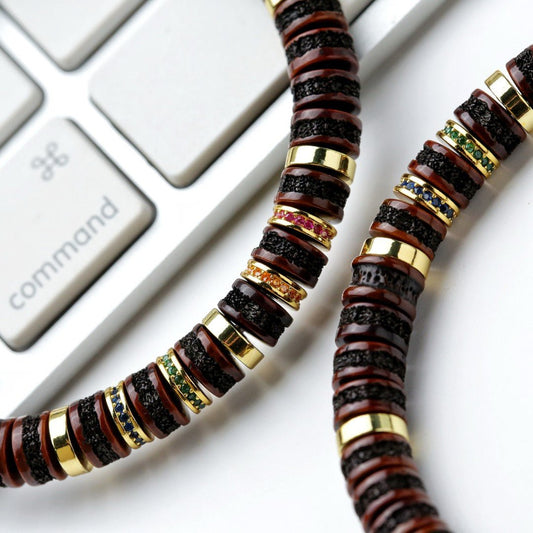
Inside the elaborate weave among Tibetan sacred practices rest two powerful symbols: the detailed thangka and symbolic bodhi ornament. Individually, in particular fashion, offer access to elevated consciousness. The thangka, a colorful canvas, shows holy beings, mystical shapes, or doctrinal episodes, providing insight for inner reflection.
Yet, the bodhi bead, often crafted from fine gems, timber, grains, or bone, is a tangible reminder of Buddha's transcendence under the bodhi tree. Grasping the beads in sacred rituals aids mindfulness cultivation.
- As a pair, the thangka and the bodhi bead signify the marriage of image and mindfulness. They offer a tangible link to the ancient wisdom of Tibetan Buddhism.
Legends Echoed from Camel Remains
Within historic timelines, age-old treasures whisper tales relating to a world long departed. These are not embellished objects associated with shadowed empires, but simple camel bones etched with motifs that preserve the secrets of a bygone generation. Every fragment holds the echo in a life lived, a journey undertaken, and a connection to the primeval wisdom within which embraces us all.
- These
- Artifacts
- Serve
Revealing the Hidden Language of Thangka Paintings
Tangkas are glowing paintings on canvas, meticulously crafted by Tibetan artists to depict consecrated figures and scenes from Buddhist literature. Each detail within a thangka is laden with interpretation, forming a complex tapestry of visual narratives that guide the viewer on a inner journey. The palettes used in thangkas are not merely aesthetic choices but carry profound connotations, exemplifying different aspects of the Buddhist path. From the stoic figures to the intricate ornamentation, thangkas offer a glimpse into the rich world of Tibetan Buddhism, inviting us to deliberate upon its teachings.
- Authentic thangka art often depicts key Buddhist figures such as Buddha Shakyamuni, Bodhisattvas like Avalokiteshvara and Manjushri, and enlightened beings from various schools of Tibetan Buddhism.
- Amidst these representations lies a wealth of awareness that can be comprehended by those who engage the symbolic language of thangkas.
Siddhartha's Path to Enlightenment: Embodied in Beads and Bone
Upon the winding road to nirvana, the Buddha employed signs imbued with profound weight. Entire bead and object held within them the nature of his philosophy, manifesting glimpses into the form of reality. By means of their figure, the Buddha transmitted profound revelations that overcome the realm of tangible perception.
From specific spiritual beads, crafted from exotic materials, emerged vibrations that sounded with the nuanced flows within. The matrix of a existence, meticulously transformed into insignia, served as tangible reminders of the impermanence innate to all creatures.
Thangkas: Windows into Himalayan Spirituality
Thangkas glowing paintings on cloth serve as effective representations of Himalayan spirituality. These intricate works of art, meticulously created with precise brushstrokes, depict a vast array featuring Buddhist deities, mandalas, and scenes from venerable scriptures. Each thangka is a contemplative aid for meditation and contemplation, offering awareness into the profound teachings of Buddhism.
- They are often used in ritual ceremonies as part of
- inspiring states of spiritual enlightenment.
- Thangkas act as not merely decorative pieces but rather doorways into the rich and fascinating world of Himalayan spiritual traditions.
The Allure of Bodhi Beads: Exploring Mindfulness and Compassion
Each pellet on a bodhi bead mala whispers tales of ancient wisdom, guiding us on a quest through the tranquil waters of mindfulness. As we handle these intricately crafted beads, our fingers trace the contours of individual one, anchoring our cognition in the present moment. The gentle texture of the beads against our palms serves as a tangible reminder to take a breath, fostering a sense of tranquility.
- Upon each bead that passes between our fingers, we foster compassion, extending it first to ourselves and then outward to the world.
- Buddhism teaches us that mindfulness is a art form that requires patience and endurance.
Utilizing the rhythmic repetition of mantra or simply the mindful tracking of the beads, we detach from the relentless chatter of the mind.
The practice utilizing bodhi beads is a beautiful invitation to re-engage our connection with ourselves and the world around us.
Intentional Craftsmanship: Making Camel Bone Bracelets for Inner Evolution
Determination acts as a profound catalyst in our lives, shaping our experiences and guiding us towards our predestined way. When we combine this intention with the ancestral experience of crafting a camel bone bracelet, we create a potent synergy that can boost our spiritual growth.Camel bone exudes mystical power, representing toughness. Its natural beauty and perennial fascination serve as a constant reminder of the core vitality within each of us.Through mindful selection of bones, instill intentions into the creation. With every knot or tie, we insert our hopes, dreams, and aspirations for spiritual evolution. This act of creation becomes a reflective routine, aligning us with our inner wisdom and guiding us on a voyage of awakening.- Match the bone’s tones to your aspirational themes.
- Imagine your dreams threading through each crafted segment.
- Keep it close as a symbol of your evolving journey.
The Enduring Impact of Camel Bone in Buddhism
In the rich tapestry of Buddhist tradition, artifacts often hold profound symbolic meaning. Within these varied objects, camel bone stands out as a rare and intriguing element. Throughout history, this material has been used in the crafting during various Buddhist implements, each imbued with specific meanings.
- Perceived as a symbol of resilience and strength due to the camel's ability to withstand in harsh environments, camel bone often signifies spiritual fortitude.
- Complementarily, the color and texture in relation to camel bone are believed to some to hold auspicious connotations, representing purity and serenity.
Thus, camel bone has become a cherished part of Buddhist tradition, serving as a tangible link to the profound teachings within this ancient faith.
Thangka Paintings: A Tapestry of Divine Stories
Within the ethereal realm of Tibetan Buddhism, Thangka paintings emerge as sacred portals to enlightenment. These remarkable works, meticulously crafted by skilled artists known as thangkapa, depict a myriad consisting of vibrant deities, celestial beings, and mythical creatures. Each brushstroke embodies profound spiritual significance, narrating ancient tales and philosophical teachings.
- Presenting a vast reservoir of Buddhist iconography, Thangkas serve as both devotional objects and instructional tools. Faithful practitioners gaze upon these paintings during rituals and meditations, seeking to achieve spiritual wisdom.
- Adorned with intricate details through a plethora of vibrant hues, Thangkas are considered windows into the divine. Every painting acts as a symbolic representation of the Spiritual Leader's teachings and the path to liberation.
By way of their compelling imagery and symbolism, Thangka paintings offer a glimpse into the rich devotional traditions of Tibet. They are a testament to the enduring artistry of Tibetan art and its profound ability to awakening.
Embracing the Duality: Thangkas and the Cycle of Life and Death
Thangkas, vivid tapestry scrolls of the Himalayas, manifest an intense meditation on mortality’s impermanence. Each intricate depiction depicts deities and beings engaged in the progressive process of life and death, a array of birth, growth, impermanence, and renewal. The artists skillfully intertwine these concepts within the thangka's environment, highlighting the harmony of all things. Through vivid representations, they invite us to meditate on our own life. The cycle recurs, a pattern of coming and going, stressing the preciousness of each moment. By embracing this duality, thangkas teach us to cherish the beauty in both life's joys and sorrows.Chains of Spirituality: The Significance of Bracelets in Buddhist Practice
In the intricate tapestry of Buddhist practice, seemingly minimalist objects often hold profound meaning. Among these are bracelets, which serve as tangible tokens of devotion and commitment to the teaching of Buddha. Worn on the wrist, a bracelet works as a constant reminder of one's Thangka aspirations and aims. It can express the impermanence of life, fostering practitioners to remain centered in the present moment. Some bracelets may feature sacred inscriptions, such as mantras or the names of Buddhas, which are regarded to draw in positive energy and defense. Others might be made from resources with spiritual significance, like sandalwood or lotus seeds, enhancing the bracelet's power. Ultimately, the significance of a Buddhist bracelet lies far beyond its physical form. It becomes a powerful tool for contemplation, a prompt to live in harmony with the teachings of Buddha, and a manifestation of one's unwavering trust.